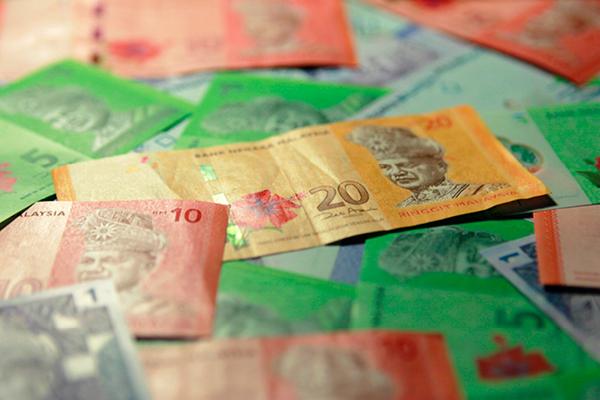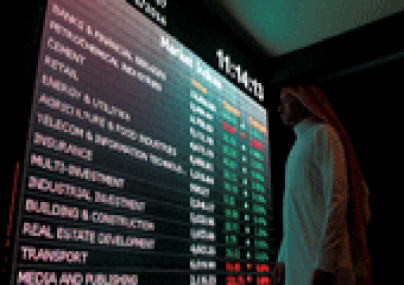
Islamic financial institutions are attracting huge investments with increasing presence in the non-Muslim nations and according to Ernst & Young (E&Y) the asset size of the industry will double to $3.4 trillion by 2018. However the industry still lacks internationally recognised standards, which remain inconsistent across the key markets of Asia, Europe and the Middle East.
“The diversity in the Islamic banking is a legacy of the last 14 centuries [of Islam] and all financial contracts discussed in the current Islamic finance represent a reflection of the different views of different schools of Islamic law,” says Ahcene Lahsasna, deputy director of Centre of Research and Publication at the Global University of Islamic Finance (INCEIF) in Kuala Lumpur.
The industry thrives on the Islamic values attached to its functioning and choice of financial products that must exclude charging of interest and investments in prohibited sectors like weapons and chemicals.
Before introducing securities and other financial instruments in the market, the Islamic financial institutions must get fatwas – rulings from the religious scholars – in support of these instruments.
The industry has several standards to choose from and according to a 2013 PWC report titled Islamic Finance Creating Value, these include the Islamic Financial Services Board, International Financial Reporting Standards, Accounting and Auditing Organisation for Islamic Financial Institutions (AAOIFI), Malaysian Accounting Standards Board, General Council for Islamic Banks and Financial Institutions and International Islamic Financial Market.
According to Lahsasna, there are some differences among various sharia standards applied in different jurisdictions that result in differences in practice when it comes to the operation of the Islamic financial institutions. Some examples include charging a fee on guarantees, selling of debt, the features of guarantees in some equity contracts applications, the level of the mixed portfolio, the status of some sharia contracts (such as wafa and inah), and liquidity facility in sukuk issuance.
While the AAOIFI and Organisation of Islamic Cooperation (OIC) standards do not permit charging a fee on providing a guarantee, the Islamic Bank of Jordan and some sharia boards allow the practice based on their resolutions. In some cases there are different practices within one jurisdiction For example, the Islamic financial institutions in Malaysia allow charging fees on a guarantee, but Al-Rajhi Bank, which is also based in Malaysia, does not allow it as it follows AAOIFI standards as well as the resolutions of their sharia board, says Lahsasna.
According to Lahsasna, lawyers working on Islamic finance related instruments often get prior instructions from the institutions they are working with about the rules and standards to be followed in drafting the legal documentation. “While drafting contracts for a guarantee for example, lawyers get a briefing on whether the bank takes a fee on kafala (or guarantee) or not, the percentage charged and how at the time of the closure it would be taken into account,” he says.
Another important issue which divides opinion among the Islamic scholars is tawarruq, which is a contract for liquidity management and applied in some banking applications such as personal financing, home financing, overdraft, cash line, and other banking applications.
According to Lahsasna, the issue of tawarruq contracts is still debated among sharia scholars and it resulted in different practices by the Islamic financial institutions depending the position and stand of their respective sharia board. “Tawarruq is a product designed for liquidity management, a real challenge for the IFIs, which should be justified by the sharia board of each financial institution” he says. “Some scholars do not allow it, whereas some allow it and others allow it only when it is needed.”
Furthermore, allowing tawarruq also depends upon the financial maturity of a country. It may be allowed in the jurisdictions that have a very strong stock market infrastructure, while the jurisdictions with a weak infrastructure may compromise its requirement, as tawarruq requires a sophisticated banking platform to operate efficiently in a sharia-compliant manner, says Lahsasna.
For example, says Lahsasna, the Saudi-headquartered Al-Rajhi bank, Kuwait Finance House and Asian Bank of Qatar, practice tawarruq business in Malaysia through Bursa Suq Al-Sila’. “It is possibly because the infrastructure in Malaysia is very strong and the operation is based on clear standards and guidelines regarding sharia compliance through the supervision of the relevant authorities,” he says, “However, these very institutions may have reservations in doing tawarruq in many other jurisdictions because of the inadequate banking infrastructure in those jurisdictions.”
Another inconsistency among the standards relates to debt instruments. Under Islamic finance rules, debt cannot be sold unless it is a mixed portfolio and according to Lahsasna, the ratio of the mixture recommended by major standards varies depending on the sharia board’s resolution, though it is generally 30 percent. “However the practice in some places in the Middle East shows there are other benchmarks used which differ from the 30 percent benchmark and it may go lower than that,” says Lahsasna.
Among all the standards, AAOIFI, which are based in Bahrain, are the most accepted ones and are set as a major reference point and benchmark for the industry at the global level, says Lahsasna. “For anyone who wants to start [an Islamic finance business], the easy way is to look at the readymade AAOIFI standards,” he says.
Furthermore, according to the PWC report, AAOIFI’s accounting, auditing, governance and sharia standards have played an important role in enhancing credibility and demand for Islamic banking products. “Regulations and industry standards are important to maintain consumer confidence, growth and innovation,” it said.
Efforts are currently been made in Malaysia to bring in widely recognised sharia standards for the local market, says Lahsasna.
However, in challenging situations, the standards may or may not be applied and the resolutions by the banks’ own sharia board could be used to address the relevant issues faced by the institution, says Lahsasna. “As long as there is a sharia board fulfilling the requirements of competency of knowledge in sharia, institutions can still be run without referring to a benchmark,” he says.
According to Lahsasna, the resolutions carry full sanity as they are based on objective procedures, standards and requirements that are very well known in Islamic jurisprudence.
Divergence in standards is not the only aspect that divides the international Islamic finance industry according to E&Y’s World Islamic Banking Competitiveness Report 2013-14 — customer attitudes, regulations and profitability vary significantly across the Islamic markets.
Indeed it is a major challenge for Islamic banks, which serve 38 million customers globally, to adjust the propositions, operating models, systems, tools and processes and at the same time to understand and fully capitalise on the international opportunities, said the E&Y report.
Furthermore, the report said that, most of the Islamic banks believe that digital and mobile banking adoption will grow beyond payments to more complex savings and financing products.
In United Kingdom, the Islamic finance industry got the impetus for growth from the flexibility provided by the Financial Services Authority in respect to the regulatory treatment of Islamic deposits and stamp duty on Islamic mortgages, said the PWC report.
The next big wave of Islamic finance will be driven by Bahrain along with Qatar, Indonesia, Saudi Arabia, Malaysia, UAE and Turkey, said the E&Y report. “There continues to be a huge demand on the key reference centres – Bahrain and Malaysia in particular – to provide leadership for the next phase of industry’s progress,” it said.
The notion of the “halal economy,” inclusive growth and differentiating through responsible banking could be the game-changer that Islamic banking has been looking for, said the E&Y report. “Hence, the rise of Dubai, London and Istanbul at this hour is definitely a positive development that will help to raise the performance bar for all,” it said.
According to Lahsasna, there is also an aggressive penetration from non-Muslims, both individuals and countries, into the industry as, for example in Malaysia, the majority of the stakeholders and the depositors in the Islamic banks are non-Muslims, especially Chinese. “Many countries including Japan, China, South Korea, Hong Kong, France, United Kingdom, Germany and Luxembourg are adopting Islamic finance,” he says.
One of the reasons behind the increasing popularity of Islamic finance is its products, which according to Lahsasna, are more secure as they are backed up with real assets and in an event of an economic crisis or default they do not turn toxic. “Financial crises in the recent past have proven that Islamic finance is quite a resilient industry, where the losses are minimal,” he says.


